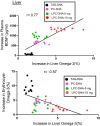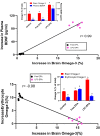Plasma BDNF is a more reliable biomarker than erythrocyte omega-3 index for the omega-3 fatty acid enrichment of brain
- PMID: 32616795
- PMCID: PMC7331585
- DOI: 10.1038/s41598-020-67868-9
Plasma BDNF is a more reliable biomarker than erythrocyte omega-3 index for the omega-3 fatty acid enrichment of brain
Abstract
Enriching brain DHA is believed to be beneficial for the prevention and treatment of several neurological diseases, including Alzheimer's disease. An impediment in assessing the effectiveness of the treatments is the lack of a reliable biomarker for brain DHA. The commonly used erythrocyte omega-3 index is not suitable for brain because of the involvement of unique transporter at the blood brain barrier (BBB). We recently showed that dietary lysophosphatidylcholine (LPC)-DHA significantly increases brain DHA, which results in increase of brain BDNF. Since there is bidirectional transport of BDNF through the BBB, we tested the hypothesis that plasma BDNF may be used as biomarker for brain DHA enrichment. We altered the brain DHA in rats and mice over a wide range using different dietary carriers of DHA, and the correlations between the increase in brain omega-3 index with the increases in plasma BDNF and the erythrocyte index were determined. Whereas the increase in brain omega-3 index positively correlated with the increase in plasma BDNF, it negatively correlated with the erythrocyte index. These results show that the plasma BDNF is more reliable than the erythrocyte index as biomarker for assessing the effectiveness of omega-3 supplements in improving brain function.
Conflict of interest statement
The authors declare no competing interests.
Figures







References
Publication types
MeSH terms
Substances
Grants and funding
LinkOut - more resources
Full Text Sources
Medical

